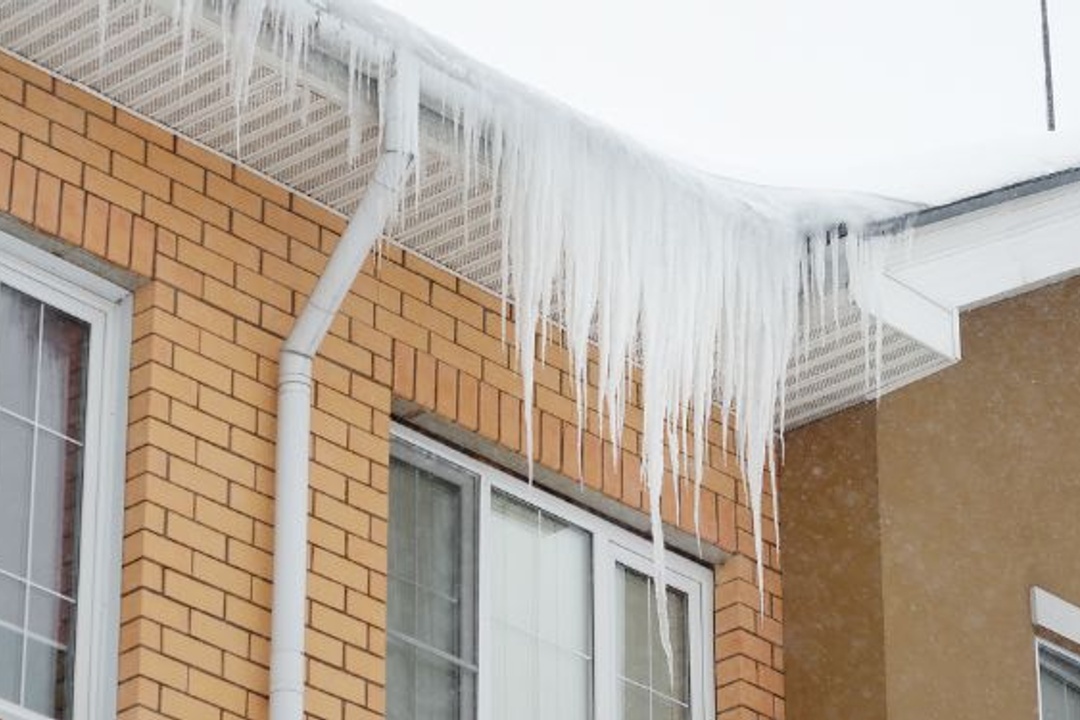
What fixes are mandatory after a home inspection? The short answer is none. From a legal standpoint, there are no mandatory repairs after a home inspection. That doesn’t mean, however, that sellers can dismiss the home inspection offhand or refuse to pay for requested repairs and expect the sale to proceed.
The answer of who pays for repairs is equally ambiguous–“it depends” unfortunately. While a seller may not have a list of legally mandated repairs, there are some repairs that the buyer’s lender may require the seller to make in order to proceed with the financing. These repairs typically include serious health, safety, and structural issues that may have been found during the course of the home inspection.
Beyond those repairs, buyers and sellers can negotiate the terms of the repairs or other concessions to come to an agreement.
So to begin with, what exactly is a home inspection? A home inspection is performed by trained and licensed professional home inspectors, who will go over every detail of a home to look for current issues and potential issues.
They will check electrical and plumbing, HVAC components, safety features, windows and doors, insulation, and more and then provide a detailed report on the property’s current condition and potential problems that could arise down the road.
Many buyers will write an inspection contingency in their offer to allow them to request repairs or terminate once the inspection report becomes available. The inspector, usually chosen and paid for by the buyer, will perform their inspection once the contract is signed by both parties but before closing. In Texas, this will happen during the option period.
As a seller, you should carefully read over any requested or mandated repairs and discuss with your REALTOR® to determine your best course of action.

What Sort of Issues Must Be Fixed?
Once the inspection has been completed and presented to the buyer, and potentially the buyer’s lender, they can present a list of requested repairs for the seller to make before closing. Buyers will often have a list of “must-have” and “like to have” repairs, indicating that if the seller refuses to make the “must-have” repairs, they will not proceed with the sale and will terminate the contract.
As mentioned before, some lenders will have their own list of required repairs to ensure the home appraises for the appropriate amount before they will finalize the financing and allow the sale to go through.
These can include, but are not limited to:
* Damage from water or mold
* Hazards, including electrical, potential fire, and structural
* Violations of your local building codes
* Faulty plumbing, electrical, or HVAC systems
* Old roofing that will need replacing immediately or within the next three years
* Infestations of insects or pests
* Cracks indicating foundation issues
* Chemical contamination, such as lead-based paint or asbestos
Is The Seller Obligated to Pay For Them?
Again, all repairs and who pays for them are negotiable during the contract process. Buyers must weigh the pros and cons before deciding which repairs, if any, to request. Sellers will likewise have to weigh their options to determine which repairs or concessions will be worth it to them.
Many contracts include verbiage on how repairs will be handled. Sellers are usually expected to pay for those involving major damage or safety issues, such as mentioned above. Most REALTORS® advise their clients to prepare to spend one-half of a percent to one percent of the home’s price on needed repairs.
There are exceptions, however, so it’s important to discuss potential repairs, as well as current market conditions with your REALTOR®, whether you are the buyer or seller, to have a realistic expectation going into the home inspection and repair requests.

What Are Some Common Requests That Buyers Make?
Beyond the essential repairs we’ve already discussed, buyers will often ask for repairs on items that affect the livability of the home. Most buyers will want to move into their new house quickly, and will not want a long list of repairs that need to be completed before they can truly enjoy the property.
These repairs can be handled by the seller themselves, or sellers can offer alternative concessions, such as a discounted sales price or paying for the home warranty, so the buyer can handle the repairs themselves.
Here are some of the most common optional repairs requested.
Appliances
Major appliances that are not in working order will affect the livability of the home and most buyers will request they be repaired or replaced. Any appliance that is not included in the sale of the home will be excluded from this. Some examples of appliance issues include a leaking dishwasher, non-functioning disposal in the sink, or a broken refrigerator. Some sellers will exclude major appliances, like refrigerators, from the sale of the home, so it’s important to note what is included.
The average cost for appliance repair is $105 - $240.

Doors and Windows
Broken or rotting seals around doors or windows can affect heating and cooling costs, as well as pest control issues. Double pane windows can present a particular problem, as failing seals can lead to moisture and fogging between the panes.
Window seal repairs can cost $70-$120 per window.
Heating and Air Conditioning (HVAC)
Air conditioning units need regular maintenance to run their best, and a home inspector may turn up indicators that the unit has not been serviced or cleaned recently. Dripping or standing water in the pan and rust are two indicators that there may be a blockage. Buyers will typically ask that an AC unit be serviced as part of the repairs to make sure it’s in top shape before they move in.
Furnace maintenance is also important, particularly in areas where temperatures drop during the winter. Keep in mind that home warranty companies often require inspection and service of the entire HVAC system before they will issue a policy.
The average cost for AC service and maintenance is $75 - $200.
The average cost of heating system inspection and service is $99 - $300.
Electric Systems
Missing GFCI outlets (required in wet areas and the exterior of the home) and outdated wiring and electrical panels are common, particularly in older homes. Any electrical issues flagged as potential fire or safety hazards should be addressed.
The average cost to install a GFCI outlet is $132 - $288.

Plumbing
Major plumbing issues that cause significant damage are covered in the section above, but less critical plumbing issues can arise in a number of places. Slow drains can indicate a backup in the plumbing line that, if left unchecked, could lead to flooding and water damage.
Water pressure can also be problematic. The home should have a pressure reducing valve installed, to keep the water pressure below 80 PSI. If it is faulty or missing, it will need to replaced or installed.
The water heater is another place for potential issues. Nobody wants to wake up to a cold shower, so it’s important to be aware of, and correct, any problems noted.
Both tankless and tank water heaters have a lifespan, typically 20 years and 8-12 years respectively. If the water heater in the home is nearing the end of its shelf life or shows signs of lack of regular maintenance, it will be worth it to ask for a servicing of the unit to determine if a replacement is needed.
If the home has a pressure reducing valve installed (as mentioned above), a water heater expansion tank may be required to safely regulate the pressure of the heating water. In some places, both the valve and expansion tank will be required in all homes, while it may be optional in other areas. Talk with your home inspector to determine what the local code is and if an expansion tank is needed.
The average cost to install a pressure-reducing valve is $350.
The average cost for water heater repair is $218 - $940.
The average cost to install a water heater expansion tank is $145 - $350.
Roofing
Damage to roofing, such as missing shingles, soft spots, damaged flashing, and gutter issues, can lead to serious damage down the line if not corrected quickly. Cosmetic issues are not a concern here, but any significant problems should be addressed. Keep in mind, metal or tiled roofs will have their own specific issues and costs associated with repairs.
The average cost for minor to moderate roof repairs is $150 - $1000.

What Repairs Should A Buyer Not Bother Asking For?
While a home inspection can feel alarming, bringing to light every little defect in your potential dream home, it’s important for buyers to think strategically about what repairs they will ask for.
Cosmetic defects and minor updates may be irksome, but they are not major causes for concern and can usually be remedied easily. A long list of demanded repairs sent to a seller could potentially sour the deal or lead to pushback on any repairs at all.
Here a few things buyers should consider repairing or correcting themselves, rather than asking the seller to pay for it.
Minor repairs
Unless you are purchasing a new home, every home will have its share of normal wear and tear. If a repair is needed but does not affect the safety or structural integrity of the home, consider adding it to your own “honey-do list” once you move in.
Cosmetic issues
While it’s understandable to want everything perfect in your new place, buying an existing home means there will be a few cosmetic issues to contend with. Whether it’s the dingy carpet, a wall that needs fresh paint, or outdated plumbing fixtures, these should not be included in the list of repairs to the seller and should be handled by the buyer as part of the move-in process.
Easy replacements
Older homes in particular will have a litany of updates to contend with. It’s important to only request major repairs and replacements that will affect your own health and safety once you move in. Small replacements, like updating the smoke detectors and replacing broken or missing electrical plates, should be taken in stride and not requested of the seller.

What Happens If You Refuse to Make Repairs?
Whether or not a seller can refuse to make repairs, and which repairs they can refuse, will depend on the negotiated contract. Some contracts have clauses that require certain health and safety repairs be made by the seller if they come to light during the home inspection. It is important to read the contract carefully to understand your full potential obligations before signing.
Even if there is no contractual obligation to make repairs, out and out refusal can lead to loss of financing or termination of the contract by the buyer. In this case, sellers must weigh their options to determine what they are willing to concede.
Sellers can offer concessions in lieu of repairs, easing the financial burden of those repairs on the buyer, who will have to oversee them themselves. Concessions can include assistance with closing costs, reducing the sales price, or a credit towards the cost of repairs.
If you are selling your home, it’s important to discuss your level of willingness to handle any potential repairs with your REALTOR® ahead of time, to avoid any negotiation issues down the line.

Should You Sell “As Is” to Avoid Repair Requests?
One way to avoid the repair question altogether is to sell your home “as is”. Property being sold “as is” will be sold in its current condition, with no repairs, or credits toward repairs, made by the seller before closing. This requires a specific contract and will be disclosed to any potential buyer before they even make an offer.
While this may sound tempting, it’s important to consider the drawbacks of selling your home “as is”, which are largely financial. Buyers tend to consider homes sold “as is” to have major issues. This means you will attract fewer buyers, and many of the ones you do attract will be looking for a deal. You will most likely get very low offers due to the perception that your property is damaged. In most cases, you can’t sell your home “as is” and expect to receive top dollar.
Another thing to keep in mind is that you will still have to provide a seller’s disclosure, even if you are not making repairs. Buyers can also request a home inspection to determine the exact condition of the property before finalizing the purchase. So, selling “as is” will not allow you to hide potential issues from buyers.

How to Find a Compromise When There Are Repairs
Both buyers and sellers will need to come to the negotiation with realistic expectations based on current market conditions. In a buyer’s market, sellers will be under more pressure to make repairs to secure the sale.
Alternatively, a strong seller’s market means that buyers will need to think carefully about what they are willing to live with, as the sellers could potentially just accept a backup offer from another buyer if they ask for too much. In a multiple offer situation, buyers can expect to have very little, if any, negotiating power.
No matter what the situation, selling or buying a home involves compromise. You cannot “have your cake and eat it too”. It’s important to recognize any limitations that your plan might have, both monetarily and on the timeline of the sale.
Strategizing with your REALTOR® ahead of time about how you want to handle potential repairs will mean that you walk into any negotiations with a clear plan of action and a goal in mind.
No matter what your philosophy going into it, remember that home inspection and repair is just one step in the home selling and buying process. Don’t get mired in the details and lose sight of the larger picture, which is either selling your home or buying a home.
Try to keep emotions out of the equation and adopt a pragmatic approach. For buyers, evaluate the most important requests to protect your investment and give you peace of mind. For sellers, weigh the potential costs against the potential loss of the sale to determine what you are willing to spend and how.
If you are ready to list your home or are interested in more information on what repairs might be needed to get it ready to go on the market, we’d love to help. Visit us at homecity.com to get started.










